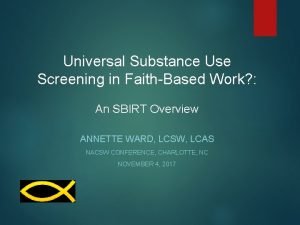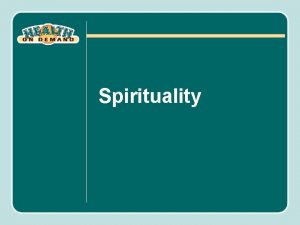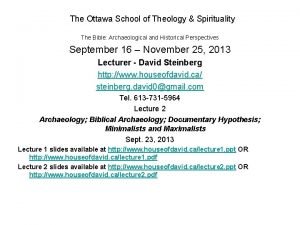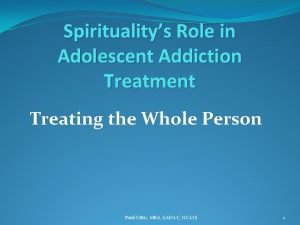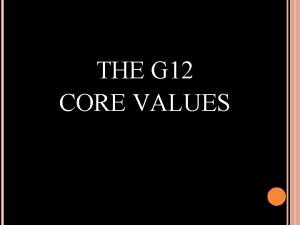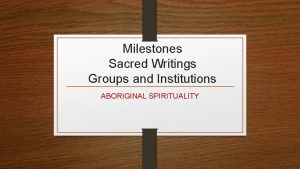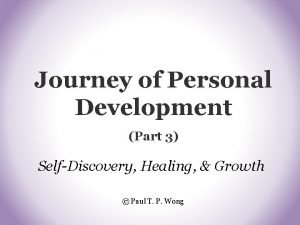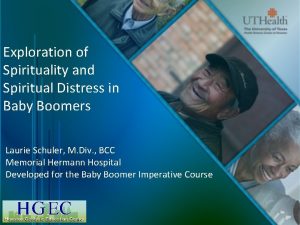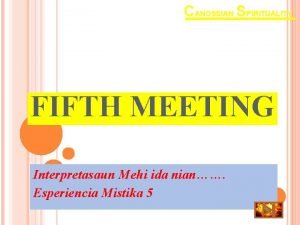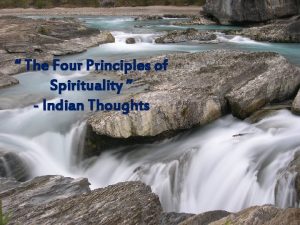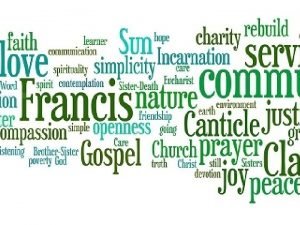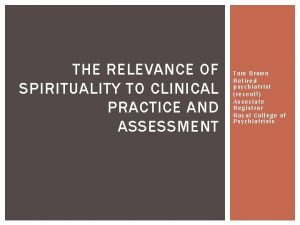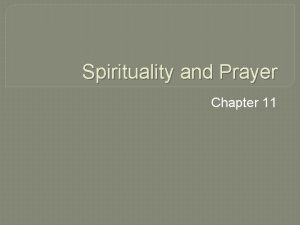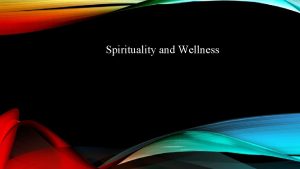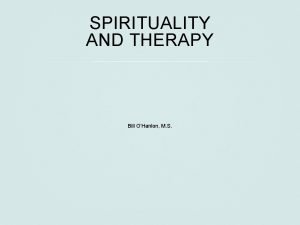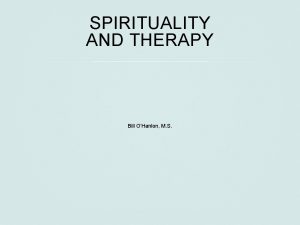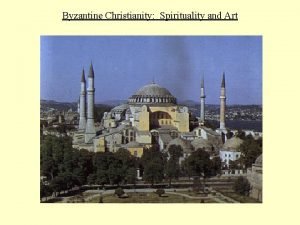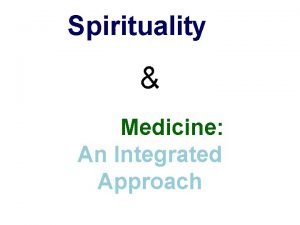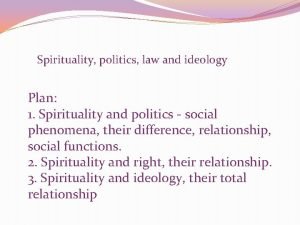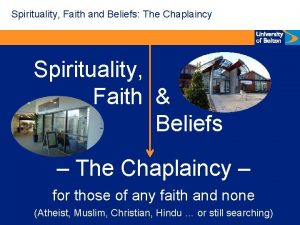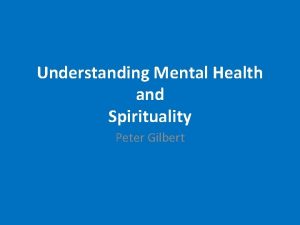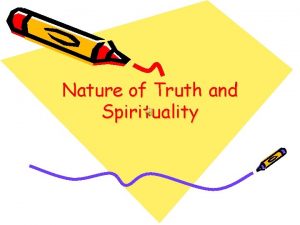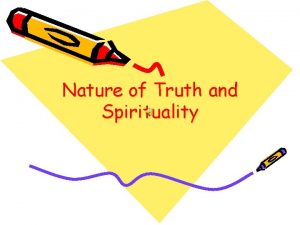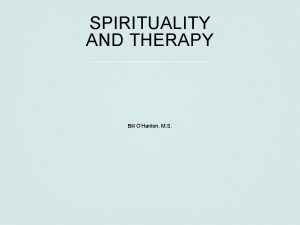Stage 2 Religious Diversity and Spirituality RELIGIOUS DIVERSITY


















- Slides: 18

Stage 2 Religious Diversity and Spirituality RELIGIOUS DIVERSITY AND SPIRITUALITY IN AUSTRALIAN SOCIETY

2011 Census �RELIGIOUS AFFILIATION Since the first Census, the majority of Australians have reported an affiliation with a Christian religion. However, there has been a long-term decrease in affiliation to Christianity from 96% in 1911 to 52% in 2016. Conversely, although Christian religions are still predominant in Australia, there have been increases in those reporting an affiliation to non-Christian religions, and those reporting 'No Religion'.

Year 11 Religions in Australia �Australia has no official state religion and people are free to practice any religion they choose as long as they obey the law.

Year 11 Religions in Australia �Religious freedom is safeguarded by section 116 of the Australian Constitution, which prohibits the federal government from making any law establishing any religion, imposing religious observance, or prohibiting free exercise of any religion. �Citizens may not incite religious hatred.

High Court of Australia �"For the purposes of the law, the criteria of religion are twofold: first, belief in a Supernatural Being, Thing or Principle; and second, the acceptance of canons of conduct in order to give effect to that belief, though canons of conduct which offend against the ordinary laws are outside the area of any immunity, privilege or right conferred on the grounds of religion. "

�In the past decade, the proportion of the population reporting an affiliation to a Christian religion decreased from 68% in 2001 to 61% in 2011 and in 2016 52. 1%. This trend was also seen for the two most commonly reported denominations. In 2001, 27% of the population reported an affiliation to Catholicism. This decreased to 25% of the population in 2011 and 22. 6% in 2016. There was a slightly larger decrease for Anglicans from 21% of the population in 2001 to 17% in 2011 and then 13. 3% in 2016. Some of the smaller Christian denominations increased over this period - there was an increase for those identifying with Pentecostal from 1. 0% of the population in 2001 to 1. 1% in 2011. However, this remains static at 1. 1% in 2016.

�The Australian Bureau of Statistics estimated resident population (ERP) at June 2011 was 22. 32 million people. �Of these people, more than one quarter were born overseas (6. 03 million). This continues the historical trend of a high proportion of overseas-born among Australia's population. People born in the United Kingdom were the largest group of overseas-born residents (1. 18 million people at 30 June 2011), followed by those born in New Zealand (564 920), China (391 060), India (343 070) and Vietnam (212 070). �

�The number of people reporting 'No Religion' also increased strongly, from 15% of the population in 2001 to 22% in 2011. This is most evident amongst younger people, with 28% of people aged 15 -34 reporting they had no religious affiliation. In 2016, 30. 1% of Australians stated "no religion" and a further 9. 6% chose not to answer the question.

�Over half of the overseas-born population (56%) reported a Christian denomination; the two most commonly reported were Catholicism (24%) and Anglicanism (12%). Non-Christian religions were reported by 19% of the overseas-born population, with Buddhism (6. 8%), Islam (5. 4%) and Hinduism (4. 3%) being the most prevalent. The proportion of the overseas-born population who reported 'No religion' was 20%, slightly lower than the level for the Australian population as a whole (22%).

Buddhism 80. 4 0. 5 199. 8 1. 1 418. 8 2. 1 529. 0 2. 5 563. 7 2. 4 Hinduism 21. 5 0. 1 67. 3 0. 4 148. 1 0. 7 275. 5 1. 3 440. 3 1. 9 12. 0 0. 1> 26. 4 0. 1 72. 3 0. 4 125. 9 0. 5 Sikhism Islam 109. 0. 7 5 200. 9 1. 1 340. 4 1. 7 476. 3 2. 2 604. 2 2. 6 Judaism 69. 1 0. 4 79. 8 0. 4 88. 8 0. 4 97. 3 0. 5 91 0. 4 Other non. Christian 35. 7 0. 2 56. 6 0. 3 82. 6 0. 4 95. 9 0. 4 95. 7 0. 4 Non. Christian total 316. 2. 0 616. 4 2 3. 5 1, 105. 1 5. 6 1, 546. 3 7. 2 1, 920. 8 8. 2

Spirituality �The term 'spirituality' is French Catholic in origin and did not fully develop as a concept until the 18 th Century. �Spirituality in its broadest sense is the evidence of, or attempt to explain, human transcendence. �http: //www. ncls. org. au/default. aspx? sitemapid=26

Stage 2 �Some have sought to argue that religion refers to an institutional dimension whereas spirituality is to do with more subjective personal perspectives (Hill and Pargament 2003, 64). Such distinctions are often used to paint religion in a negative light in contrast with more 'enlightened' contemporary spirituality. Of course, there can be both helpful and unhelpful religions and spiritualities. Religion can also be intensely personal (eg Wuthnow 1998) just as some contemporary spiritualities can form part of large international business complexes. Further, in practice, many experience spirituality in a religious context and do not draw such distinctions (Marler and Hadaway, 2002).

Stage 2 �Ways people perceive their spirituality They prefer to think of God as a life force They find God in nature or within their own lives They all agree that there is something beyond the material world Many have had religious experiences, taking them into mystical or supernatural realms However -

In Australia (2016 ACS) �About a quarter of Australians report having had a mystical or supernatural experience. About six in ten Australians believe there is a God or spirit or life force. �Nearly half of Australians believe in God. �Three in ten Australians say they pray or meditate at least once a week.

Stage 2 �John Fisher identifies four domains of spirituality Personal- relationship with self Communal- relationships with others Environment- relationship with nature Global- relationship with transcendent other

Stage 2 �Fisher defines spiritual health as: “a fundamental dimension of people’s overall health and wellbeing, permeating and integrating all other dimensions of heath” It is a dynamic state of being, shown by the extent to which people live in harmony with: themselves; others; the transcendent; the environment

Stage 2 �David Elkins �Elkins, like Fisher, looks at spirituality as something that is multi-dimensional �He defines spirituality in this way: “Spirituality, which comes from the Latin spiritus, meaning ‘breath of life’, is a way of being and experiencing that comes about through awareness of a transcendent dimension and that is characterised by certain identifiable values in regard to self, others, nature, life and whatever one considers to be the Ultimate”.

Stage 2 �Elkins has formulated 9 dimensions of spirituality Transcendent- an experientially based belief Meaning and purpose in life Mission in life Sacredness- experiences of awe, reverence, and wonder Shuns material satisfaction Altruism- we are responsible for each other- possesses or corporate world view Idealism- looks for a better world Awareness of the tragic Fruits of spirituality
 Sbirt faith and spirituality
Sbirt faith and spirituality What is the difference between spirituality and religion
What is the difference between spirituality and religion Ottawa school of theology and spirituality
Ottawa school of theology and spirituality Spirituality and addiction
Spirituality and addiction Single stage tender
Single stage tender Stage right and left
Stage right and left What is ecosystem biodiversity
What is ecosystem biodiversity Ecosystem jigsaw activity
Ecosystem jigsaw activity G12 core values
G12 core values Spirituality definition
Spirituality definition 5 elements of salesian youth spirituality
5 elements of salesian youth spirituality Aboriginal spirituality sacred texts
Aboriginal spirituality sacred texts Mi'kmaq feather
Mi'kmaq feather Religiosity vs spirituality
Religiosity vs spirituality Spirituality definition
Spirituality definition Canossian spirituality
Canossian spirituality Four principles of spirituality
Four principles of spirituality Four pillars of franciscan spirituality
Four pillars of franciscan spirituality Spirituality in clinical practice
Spirituality in clinical practice
